Tidbits - May 20, 2021 - Reader Comments: Palestine, U.S. Must Pursue Peace; Israel, Soviet Union and U.S. Communists; Police Unions; Financial Transactions Taxes; Puerto Ricans in NYC; DC Labor Film Festival; Art of Ralph Fasanella; more....
Re: Bernie Sanders: The U.S. Must Stop Being an Apologist for the Netanyahu Government (Elena Marcheschi)
Why Are Palestinians Protesting in Gaza -- meme (Shaun King)
Re: A Nightmare of Terror Across the Landscape of Palestine (Dave Lott)
Anything War Can Do, Peace Can Do Better -- meme
Re: UE Condemns Attacks on Palestinian People,Demands Biden Pursue Peace (Suzanne Ross)
Netanyahu's Knee -- cartoon by Rob Rogers
Re: What We Did: How the Jewish Communist Left Failed the Palestinian Cause (Joseph Kaye; Jack Radey; Daniel Millstone)
Re: 'This is a huge step for law enforcement.' Police Unions Shift Stance on Protecting Bad Officers (Gavrielle Gemma; David Slavin)
Miranda Rights for Police -- cartoon by Christopher Weyant
Re: Debt Collectors: We Should Be Able to Break Your Legs (Eleanor Roosevelt)
Re: Financial Transactions Taxes: The Perfect Way to Pay for Biden’s Infrastructure Package (Isaac Dye; Arlene Halfon)
Re: 'Sends a Terrible, Terrible Message': Sanders Rejects Top Dems' Push for a Big Tax Break for the Rich (Judyth Hollub)
Re: The US Restaurant Industry Is Lacking in Wages, Not Workers (Felice Sage; Eleanor Roosevelt)
Re: Jordan Klepper Fingers the Pulse - Arizona's Shady Recount (Jay Moor)
Resources:
“The New American Gothic” -- painting by Criselda Vasquez
Inequality Did Not Happen By Accident (Economic Policy Institute)
What War Looks Like on the Globe (World Beyond War)
New Report: BlackRock's two-faced climate failings (Action Center on Race and the Economy)
Announcements:
2021 DC Labor FilmFest line-up released! - April 30–June 6 (Metropolitan Washington Council, AFL-CIO and the AFI Silver)
Peace and Occupation Cannot Coexist in Palestine! - May 23 (U.S. Peace Council)
Puerto Rican New Yorkers: Workers, Unions & Politics - May 26 (Center for Puerto Rican Studies - Hunter College)
The Art of Ralph Fasanella with Professor of Art and Architecture Dr. Marc Fasanella - May 27 (Abraham Lincoln Brigade Archives - ALBA)
Re: Bernie Sanders: The U.S. Must Stop Being an Apologist for the Netanyahu Government
Sen. Bernie Sanders: “Over more than a decade of his right-wing rule in Israel, Mr. Netanyahu has cultivated an increasingly intolerant and authoritarian type of racist nationalism.”
Elena Marcheschi
Posted on Portside's Facebook page
Why Are Palestinians Protesting in Gaza -- meme
Gaza is an open-air prison.
Shaun King
May 15, 2018
post on Facebook
Re: A Nightmare of Terror Across the Landscape of Palestine
Since occupying the West Bank in 1967, the Israeli government has pursued various policies aimed at demographically engineering the city of Jerusalem—again, all with an eye toward ensuring its perpetual dominance over the city. Among such policies are the building of illegal settlements around the city to cut it off from the rest of the Palestinian population in the West Bank; the restriction of movement to deny Palestinians access to and within the municipality itself; the revocation of Palestinian residency status, which is tantamount to expulsion; and the demolition of Palestinian homes. The Israelis also expel Palestinians from their homes, as we are witnessing in Sheikh Jarrah, so that they can be handed to Israeli settlers.
Such policies have created a uniquely potent set of threats, humiliations, and injustices targeting Palestinians in Jerusalem. Yet what is happening in Sheikh Jarrah is not just about Jerusalem but is also reflective of the entire Palestinian experience. Since the start of Zionist settler colonialism in Palestine, the aim has been to slowly and steadily expand control over the territory, pushing the indigenous population out in a continual process of replacement. The single biggest episode of this was the Nakba of 1948, during which Jewish militias and then the state of Israel depopulated hundreds of towns and villages, made nearly two-thirds of the Palestinian Arab population refugees, and subsequently denied their return, first by military force and then by force of law. But the process did not stop there. In the decades since, the settler colonial process has moved forward in Jerusalem, the West Bank, and Gaza through the building of settlements, land theft, and brute military force.
Dave Lott
Posted on Portside's Facebook page
Anything War Can Do, Peace Can Do Better -- meme

Re: UE Condemns Attacks on Palestinian People,Demands Biden Pursue Peace
Right on, UE!!! What a powerful voice for justice! What a potentially powerful challenge to Biden if joined by more unions!
Suzanne Ross
Netanyahu's Knee -- cartoon by Rob Rogers
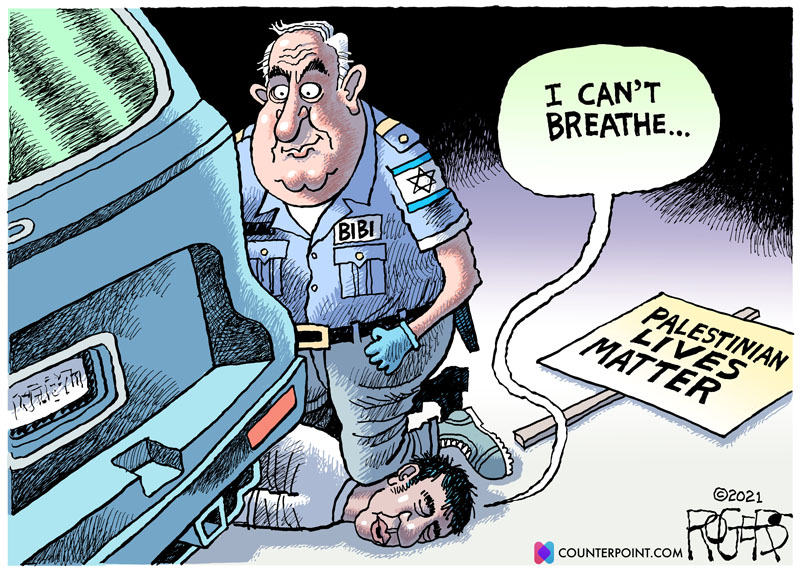
Rob Rogers
May 18, 2021
robrogers.com
Re: What We Did: How the Jewish Communist Left Failed the Palestinian Cause
I have a problem with the idea of a binational state, secular and democratic.It sounds good, and perhaps it will be desirable. But assuming that we had such a state tomorrow, given the disparity in wealth, in technology, in international imperialist support between the Palestinians and the Jews, would not we have essentially a state which, despite whatever its constitutional proclamations, would be one in which Zionist-minded Jews would dominate, and the Palestinians would remain oppressed, albeit that oppression would be masked by some Palestinian faces in high places. The road to such a state requires a preliminary stage in which a viable, stable and self-sufficient Palestinian state would then be able to confront Israel as an equal. Negotiations for a merger would then be more appropriate.
Joseph Kaye
=====
The article is good as far as it goes....but it misses something I believe.
The 3rd International took that word, "international" in a very different way than, say, the parties of the 2nd International did. During the 2nd, as shown when push came to shove in 1914, the parties all took the position that they were NATIONAL parties, who happened to be in alliance with other parties in other countries who were affiliated with the international, but when war came they fell into step behind their national bourgeoisie.
The 3rd had a different idea. What are countries but a legal fiction, used by the bourgeoisie of that country to help convince ignorant people that their true interests are national, not class. The 3rd took the position that this was all nonsense, the workers of all countries had the same paramount interests, and by that token were not to think of themselves as NATIONAL parties - the French Communist Party, the German Communist Party, the British Communist Party, but rather branches of one organization, whose unity is the unity meant by Workers of the World UNITE. So the Comintern would vote on what the position of its American branch would be on left trade unions, like the IWW. It was not for the American comrades to decide; if there was a position on the question taken by the International, you follow it. You can go there and argue with them, and before Stalin's time, fight quite hard for your position. And sometimes win.
But after Stalin gained power, more than even it had been at the beginning, when most of the world's communist parties looked to the USSR for leadership, as the first successful revolution. Under Stalin, the Comintern became nothing more or less than an instrument of Soviet foreign policy. Sometimes this policy zigged and zagged to achieve its ends, and the whiplash effect on comrades who one day strongly stood for this and tomorrow were strongly opposing it, both in terms of their own adherence to the Party and that of the broader masses who listened to the Party, could be disastrous. Stalin, being who he was, could have cared less.
Soviet foreign policy was based on what was best for the USSR, with the world movement a very distant second. The Zionist leadership was predominantly socialist, and the Arab world was still in the hands of kings who were in turn lackeys of Great Britain and becoming so of the rising US. In the chess game with what would become NATO, the Palestinians were sacrificed the same way the Greeks were when their support didn't mesh with Soviet foreign policy goals. Stalin thought of this as cold blooded pragmatism. But sacrifice of principle for short term gain usually comes back to bite you in the ass eventually. Settler colonialism is settler colonialism. On the other hand, it doesn't say anything to the Jews desirous of getting a state (and army) of their own to protect themselves from any future holocaust. But the same principle applies there too, doesn't it?
Jack Radey
=====
Until the Soviet Union changed it's mind in 1947, the international communist movement opposed the partition of Palestine and supported the creation of a democratic state of all people living there. How and why the SU and the communists in the US switched? Traced out here by Dottie Zellner with whom many of us have worked and played over the decades. Thanks to Dottie, to Jewish Currents and to Portside for this useful well thought out essay. I was especially touched by her reference to Louis Harap, of blessed memory, who took the view that the refusal of Histardut (the labor federation) to organize Palestinians was Jim Crow.
Daniel Millstone
Posted on Portside's Facebook page
Re: 'This is a huge step for law enforcement.' Police Unions Shift Stance on Protecting Bad Officers
(posting on Portside Labor)
Police organizations are not unions and should be expelled from the AFL-CIO. I have been on many picket lines attacked by police. They are the defenders of the capitalists, not workers whatever their background was. Stop legitimitizing what is really a gang of thugs.
Gavrielle Gemma
=====
This positive interpretation of the new rules should be read alongside Ham Nolan's essay ...which is far more critical of the ABLE proposals.
Early Draft of AFL-CIO's Report on Police Reform Shows a Commitment to Defending Police Unions
It's important to note the exception that Fraternal Order of Police is not part of this initiative. It represents 356,000 officers in 2100 "lodges" and its "incendiary" rhetoric over the last few years has hardened the differences and widened the divide between reformers and police
The Teamsters, SEIU and AFL CIO represent 250,000 police and 100,000 prison guards and other 'police-adjacent' workers.
David Slavin
Miranda Rights for Police -- cartoon by Christopher Weyant
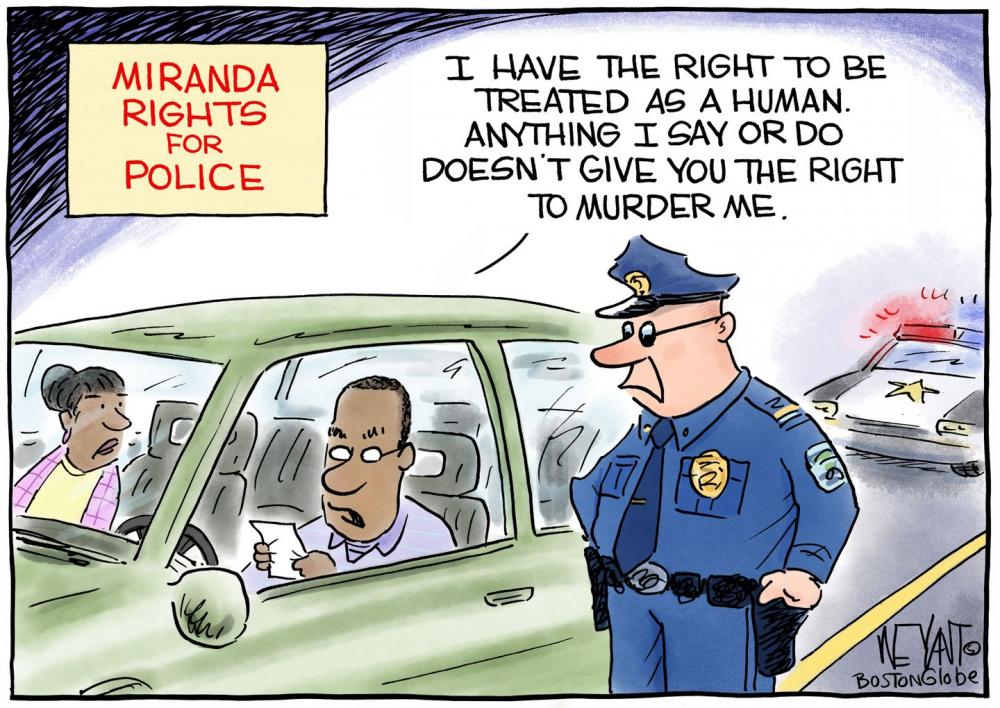
Christopher Weyant
April 15, 2021
Boston Globe
Re: Debt Collectors: We Should Be Able to Break Your Legs
Medical debt collectors are pigs. There is no other word for an industry that comes after you less than three months after the bill was incurred, and the only thing worse than those collectors is a "health care organization" that uses them. NATIONALIZE THE MEDICAL INDUSTRY.
Eleanor Roosevelt
Posted on Portside's Facebook page
Re: Financial Transactions Taxes: The Perfect Way to Pay for Biden’s Infrastructure Package
There are so many ways to pay for this stuff that it's shocking we can't even agree on one. Sure. This. I'll take it.
Isaac Dye
Posted on Portside's Facebook page
=====
Raising taxes on stock exchanges is one way to raise money to pay for new expenses, as the article states. But there are many other equitable ways.
We already have a massive amount of funds in a pot called “Defense” bit it is not used for “defense” It is used for weapons, military and war. “Defense” spending is what Biden has called “infrastructure” and more. “Defense” is housing, education, food, health care, transportation, communication, climate emergencies and much more. Start using the money called “defense” for real defense of American citizens.
Also, we should have a far more equitable tax structure. We claim we think people should “work” but collect more taxes for “working” than for sitting still and letting the money accumulate. Not only do we need a more progressive tax structure, with “payroll taxes” being counted as part of our income tax, but ALL INCOME, from ALL SOURCES should be taxed equally. Interest people receive on their bank deposits are taxed as income, dividends must be taxed equally within that progressive structure. Bank interest is generally added to the savings account; increase in assets should also be added; not just when the asset is sold, but as its earned (and lost). If an asset is worth $1000 at the beginning of the year and is worth $1050 at the end of the year (adjusting for new money deposited and any money removed), then that is $50 of “income” for the year. A decrease in the values of assets is a “decrease” in total income. Then, selling these assets becomes irrelevant. Selling for $1000 and buying for $1000 with no increase wouldn’t affect taxes and would not lead to having to time buying and selling for anything other than for investment reasons. This would also act as an automatic “brake” on stock prices without the Government having to make economic decisions. If prices go up too much, they have to be sold to pay taxes. If they go down, taxes drop and you can buy more. With the increase in stock prices over the past years, the extra taxes collected would pay for much of Biden’s proposed expenses.
And the economy would be far more equitable than it is now.
Arlene Halfon
Washington, DC
Speaking for people who are far from wealthy, and have had their property taxes raised and raised and raised, the $10,000 cap is too low. By all means, have a cap, but make it a higher cap.
Judyth Hollub
Posted on Portside's Facebook page
Re: The US Restaurant Industry Is Lacking in Wages, Not Workers
Nobody is living on easy street off unemployment and everybody knows it's not indefinite. If a woman can't afford to return to work in a restaurant right now because at least on unemployment she doesn't have to pay for child care and/or she needs to be at home for her remote learning children than that just goes to show that she was never being paid enough in the first place.
Felice Sage
Posted on Portside's Facebook page
=====
The bourgeoisie doesn't like it when their servants revolt.
Eleanor Roosevelt
Posted on Portside's Facebook page
Re: Jordan Klepper Fingers the Pulse - Arizona's Shady Recount
(posted as a Friday Nite Video)
Is it possible that the ballot counting in Arizona by the private firm, CyberNinjas, is just another Trumpian grift? The modus operandi of Trump's term in office has been to vacuum huge wads of cash from American workers, the US Treasury, foreign government officials and oligarchs and our own private sector through kickbacks, convoluted laundering schemes, regressive taxation and selling off public assets.
All the while, our media keep wasting space and time speculating on the policy strategies behind it all. It was just a grift, folks. And, given the attachment that most GOP politicians still have for the former Grifter-in-Chief, there are probably some very dodgy connections down in the sub-basement. Go diving in the fetid swamps of Trumpland. Go down deep.
On the surface, Trump's GOP has obvious links to shell corporations like CyberNinjas that have never done a lick of work in the area for which they received a sole-source contract. If memory serves, a Zinke-land firm with 3 employees was awarded a massive Trump government contract to fix Puerto Rico's electric supply after a hurricane a few years back. How many other illegal gigs have the media not reported or Trump's DOJ not investigated? Playing the Monster Grift was the purpose of the Trump presidency. Any policy that leaked out of his administration either served the grift, served to distract or was incidental. The Mafia's own Roy Cohn was a good mentor and DJT was his prized protege. No matter what the media blathers on about (abortion, trans-sports, China, Russia, masks, vaccines, etc.), Trumpland was all about racketeering. And still is.
Jay Moor
“The New American Gothic” -- painting by Criselda Vasquez

In this oil on canvas painting by Criselda Vasquez, she uses her parents to reinterpret and contemporize the iconic 1930 painting by Grant Wood, American Gothic.
Completed in 2017 and measuring 72 inches tall and 48 inches wide, Vasquez adds:
As the American-born daughter of two Mexican immigrants, I illustrate their plight and the plight of many in my community with my art. I want to expose the heart-breaking pain of what a Mexican immigrant’s family goes through. I focus on bringing my family’s world into the light and out of the shadows. My paintings are best described as visual comments on the hidden daily reality of the Mexican-American experience. These portraits and still lifes reveal my family in their own authentic environment and expose how I live in two worlds. My paintings layer the American culture over the Mexican world. I feel society needs to be aware of the humanity on the other side of the door.
The two most important people in my life, my parents, are also the two who motivated me to develop such a strong concept. When my parents pose for these paintings, their faces are reduced to extremely raw and somehow vulnerable expressions. Sadly, they strive to be invisible every day. They don’t have to pretend to illustrate the invisible. They have dealt with constant rejection, suspicion and fear so long, that it seems now that it comes naturally to them. I strive to capture how their expressions deliver that sense of tiredness, resignation, and quiet acceptance. It seems relevant to show that underneath all the politicization and underserved labeling this community receives, these are regular people just like all of us. In the long tradition of immigrants that come to the United States, they have made homes here and they are just trying to live a simple life with a bit of security and hopefulness for their children.
To see more of Vasquez’s work, check her out on Instagram and Twitter.
Inequality Did Not Happen By Accident (Economic Policy Institute)

Rising inequality was no accident
The economic devastation of the past year did not happen in a vacuum. It occurred in a context of profound and rising inequality that has driven a deep wedge between the wages of typical workers and those of high earners over the last 40 years. That inequality is not the result of market forces, but is the result of distinct and intentional policy choices, as EPI’s Lawrence Mishel and Josh Bivens outline in a new report.
Workers could be earning $10 more per hour
A loss of $10/hour in the typical worker’s compensation is the result of employers’ successful efforts to keep wage growth down over the past 40 years, according to a new EPI report. Read more | Read New York Times coverage of the report
Economic Policy Institute
1225 Eye St. NW, Suite 600
Washington, DC 20005
Phone: 202-775-8810 • epi@epi.org
What War Looks Like on the Globe (World Beyond War)
We've made further improvements to Mapping Militarism to help you find what war looks like from various angles.
For example, you can check out how much nations are spending on militarism, and what they were spending last year, to discover which have actually moved funds to address the disease pandemic and which have doubled down on death and destruction.
Or you can put the U.S. arming of Israel and Colombia in context by mapping the dozens of brutal governments to which the U.S. government is giving "military aid." Spolier: It's most of the world.
Can you guess what this is a map of?
It's members of the International Criminal Court (in orange). There are a number of notable hold-outs, including the self-appointed leader of the "rules based order."
There is a great deal to discover about war and peace in these maps. Please check them out, share them with others, and send us your feedback.
Peace,
The World BEYOND War team
World BEYOND War is a global network of volunteers, chapters, and affiliated organizations advocating for the abolition of the institution of war.
World BEYOND War
513 E Main St #1484
Charlottesville VA 22902
New Report: BlackRock's two-faced climate failings (Action Center on Race and the Economy)
In January, BlackRock CEO Larry Fink released a letter to clients about steps the world’s largest asset manager and investor of fossil fuels would be taking to address the climate crisis. Not surprisingly, the letter fell pitifully short of what our communities need and deserve from financial actors like BlackRock that have fueled the climate crisis and environmental racism for decades.
In our latest joint report with LittleSis, “BlackRock’s Governance Mess: As BlackRock Rushes to Cut Climate Risk, Lead Director Murry Gerber Doubles Down on Fossil Fuels,” we expose that while CEO Larry Fink releases statements claiming that the firm is taking action to address our climate crisis, BlackRock’s most powerful and longest-serving independent board member, Murry Gerber, has extensive ties to the fossil fuel industry, has personally invested millions in the fossil fuel industry, and directs a major corporation whose core business is oil and gas. Moreover, the industries BlackRock continues to finance and that Gerber continues to profit from — oil, gas, and coal corporations — have long targeted pipeline projects, refineries, petrochemical facilities, and power plants in Black, Brown, and Indigenous communities.
Here are a few key findings from the report:
-
Gerber has been compensated with over $3.4 million from Halliburton since 2012 for being on its board of directors.
-
At the onset of the global pandemic, Murry Gerber purchased 505,763 shares of Halliburton stock - a 732% increase in his share ownership - and has profited over $7.5 million off these share purchases as of early May 2021.
-
Gerber currently owns 580,051 shares of Halliburton stock valued at over $13 million as of early May 2021.
-
Gerber earned tens of millions of dollars overseeing the Appalachian fracking boom as a top executive at EQT Corporation.
-
Gerber’s ties to the fossil fuel industry go back over four decades.
To learn more about BlackRock’s governance mess and web of connections to the fossil fuel industry, read our report here and please amplify with your networks on social media using our digital toolkit. You can also learn more about the incredible work frontline communities are leading across the world to demand that BlackRock take meaningful action to live up to its climate commitments, stop financing the companies driving our climate crisis, and respect the rights of Indigenous Peoples and all local communities at the People’s Assembly on BlackRock happening today, May 19th at 4pm ET!
In solidarity,
Erika Thi Patterson,
Campaign Director - Environmental Justice
The Action Center on Race & the Economy (ACRE)
info@acrecampaigns.org
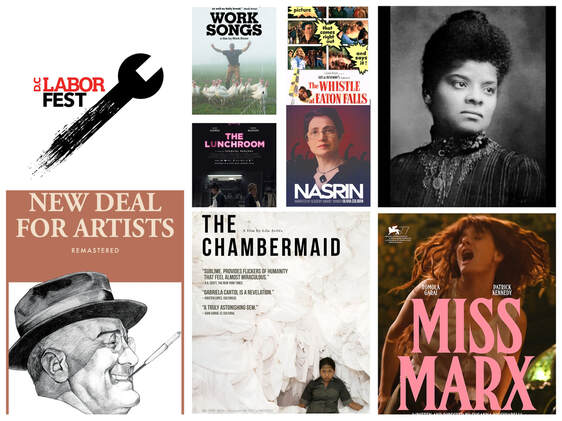
Organized and presented by the Metropolitan Washington Council, AFL-CIO and the AFI Silver, the 2021 DC Labor FilmFest features a wide-ranging selection of films about work, workers and the wider issues affecting workers' lives. This year, for its 20th edition, the festival goes virtual, presenting a lineup of outstanding work-related cinema online for audiences in the Washington, DC, area and beyond.
All tickets are just $5, unless otherwise noted. CLICK HERE for details.
Films will be released to the AFI's Virtual Screening Room each week, where they'll be available to watch until June 6.
And don't miss the LABOR GOES TO THE MOVIES podcast Movie Club discussions Thursdays at 7p! Join podcast hosts Chris Garlock and Elise Bryant -- and special surprise guests -- for a freewheeling discussion of the films in this year's DC Labor FilmFest! Click here to RSVP.
NOTE: Most titles in the 2021 DC Labor FilmFest are available to view throughout the U.S. and U.S. territories, from the date the title debuts until the festival ends June 6. One exception: THE LUNCHROOM is available ONLY to viewers in Maryland, Virginia and Washington, DC.
OVERVIEW:
WORK SONGS (Available April 30): "What's the weirdest thing that ever happened at your job?"
THE LUNCHROOM [PLANTA PERMANENTE] (Available May 4): Lila (Liliana Juárez, THE SNATCH THIEF) has been a cleaner in a provincial municipality building in Argentina for more than 30 years…
IDA B. WELLS: A PASSION FOR JUSTICE (Available May 6): Recognized in 2020 with a special Pulitzer Prize, Ida B. Wells was a household name in Black America during much of her lifetime (1862–1931)…
MISS MARX (Available May 11): Bright, intelligent, passionate and free, Eleanor (Romola Garai) is Karl Marx's youngest daughter…
THE CHAMBERMAID (LA CAMARISTA] (Available May 13): In her multi-award-winning feature debut, theater director Lila Avilés turns the monotonous workday of Eve (Gabriela Cartol), a chambermaid at a high-end Mexico City hotel, into a beautifully observed film rich with detail…
THE WHISTLE AT EATON FALLS aka RICHER THAN THE EARTH (Available May 18):
Young union leader Brad Adams (Lloyd Bridges) is reluctantly appointed president of a failing plastics manufacturing plant in a small New Hampshire town…
NASRIN (Available May 20): Immersive portrait of the world's most honored human rights activist and political prisoner, attorney Nasrin Sotoudeh…
THE NEW DEAL FOR ARTISTS (Available May 21): Remastered classic explores how Depression-era theatre actors, directors, writers and painters found themselves the target of Republicans' aggressive anti-communist agendas, and the WPA under full-blown political attack…
CLICK HERE for details and tickets.
Presented by the DC Labor FilmFest and AFI Silver Theatre, with the financial support of American Income Life, National Nurses United and IFPTE.
Co-sponsored by the Rochester (NY) Labor Film Series and the Workers Unite! Film Festival.
PRESENTED BY
Metro Washington Council AFL-CIO
American Film Institute
PREMIERE SPONSORS
American Income Life
IFPTE * NNU
Peace and Occupation Cannot Coexist in Palestine! - May 23 (U.S. Peace Council)

PEACE AND OCCUPATION CANNOT COEXIST IN PALESTINE!
Sunday May 23, 11:00 AM - 1:00 PM
Eastern Time (US and Canada)
U.S. Peace Council
P.O. Box 3105
New Haven, CT 06515
(203) 387-0370 • USPC@USPeaceCouncil.org
Join us for a Centro eJournal presentation of Dr. Aldo Lauria Santiago’s Digital Humanities exhibit, Puerto Rican New Yorkers: Workers, Unions and Politics in the Struggle for a Better Life, 1910s-1960s
Dr. Lauria Santiago will discuss how Puerto Ricans in New York experienced class differences, working class life, and working class politics. From cigarmakers during the 1920s, through union membership and to urban riots in the 1960s, the exhibit will introduce many places and contexts in which Puerto Ricans both affirmed their ethnic identity and engaged with other ethnic groups and institutions.
RSVP: http://centropr.nationbuilder.com/puerto_rican_new_yorkers
Puerto Ricans who migrated to New York joined one of the largest concentrations of urban wage workers in the world. Most migrants were already familiar with the routines and conditions of wage work while others had to adjust to the challenges of a highly developed industrial city where both exploitation as well as opportunities for better wages abounded. Work, leisure, family life and politics consumed most of their energies, but in New York the complexity of urban, class, racial and ethnic contexts could be daunting and required a myriad of adjustments. The city offered opportunities for solidarity and new forms of organization and improvement as well as unpredictable risks and new problems. This exhibit reunites a series of blogs that will introduce many of the rich contexts in which Puerto Rican New Yorkers engaged with larger movements and struggles from the 1910s to the 1970s. The mosaic represented here includes only some of the stories.
Author: Aldo Lauria Santiago, Professor, Latino and Caribbean Studies and History Departments, School of Arts and Sciences, Rutgers University
Commentator: Virginia Sanchez-Korrol, Professor Emerita, Department of Puerto Rican and Latino Studies at Brooklyn College, CUNY
Center for Puerto Rican Studies
695 Park Avenue
New York, NY 10065
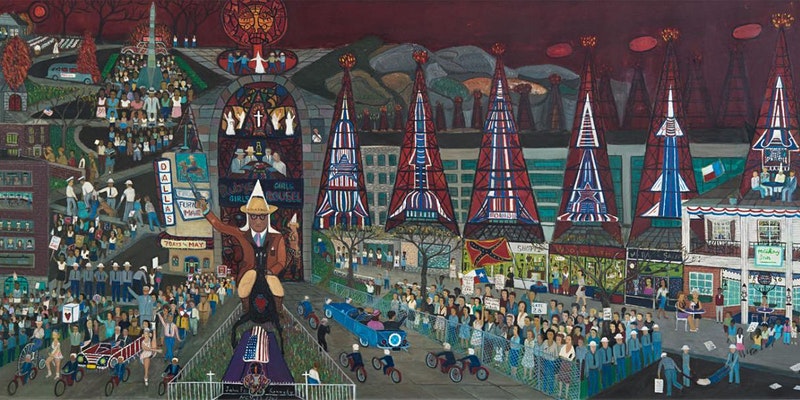
Thursday, May 27, 2021 -- 7:00 PM EDT
As part of our Susman Lecture Series we are happy to host a talk on and exhibition of the art of Ralph Fasanella with Ralph’s son, Professor of Art and Architecture Dr. Marc Fasanella .
A visual survey of Ralph Fasanella’s most powerful political art - this exhibit and lecture explores the enduring relevance of the seminal 20th Century events Fasanella depicted and their continued importance.
Throughout his artistic evolution, self-taught working-class artist, Ralph Fasanella visually chronicled the political history of his time. From the advent of the military-industrial complex, the growth of multinational corporations and the activist struggles against exploitation and cultural supremacy - Fasanella created encyclopedic pictorial narratives and simple portraits capturing the culture and identity of the American populace caught up in a market driven fantasy of social evolution through perpetual economic growth, and the attendant civil unrest.
Please join us as we explore his work and legacy in this very special lecture in our storied Susman Lecture Series.
Attendance is free but registration is required to join the lecture and discussion.
After registering you, will receive an email with the login information for the Zoom Lecture.
If you have any issues registering or connecting to the Zoom, please contact info@alba-valb.org.
Ralph Fasanella was born in the Bronx and grew up in the working-class neighborhoods of New York. He became a tireless advocate for laborers’ rights, first as a union organizer and later as a painter. His parents were among three million Italians who immigrated to America in the early twentieth-century in search of a better life. They taught their son about both the costs and rewards of hard work. As a child, Fasanella labored with his father on an ice delivery route; long hours on tough streets. His mother made sure he encountered people whose lives were harder than their own and taught him the value of empathy and respect. The most lasting lessons he learned from his parents were that family and community came before personal gain, that younger generations stood on the shoulders of those who came before them, and that all Americans should fight for their rights, themes that would later resonate in his works.
Fasanella took up painting in 1945, working in the garment industry, as a truck driver, ice delivery man, union organizer and gas station owner before devoting himself to painting full-time in the 1970s. Untrained as an artist, Fasanella developed an astute and accessible style that reflected his affiliation with and commitment to the working class. He viewed painting as an extension of his union activity and his alternately subtle and brash paintings functioned simultaneously as memorial documents, didactic tools, and rallying cries, making the possibility of a better society palpable to his own community and others like it. These paintings, often large in scale and laden with symbolic imagery, deal with themes of struggle, endurance, social justice, family and community. He felt strongly about the need to remember the sacrifices of previous generations, inscribing the phrase “Lest We Forget” on several of his paintings.
Abraham Lincoln Brigade Archives
PO Box 1245
New York, NY 10113
Email: info@alba-valb.org
Phone: 212-674-5398

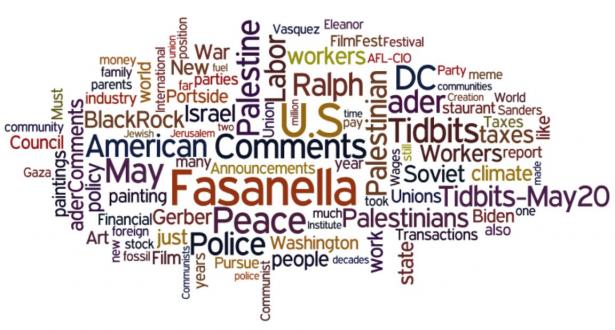



Spread the word